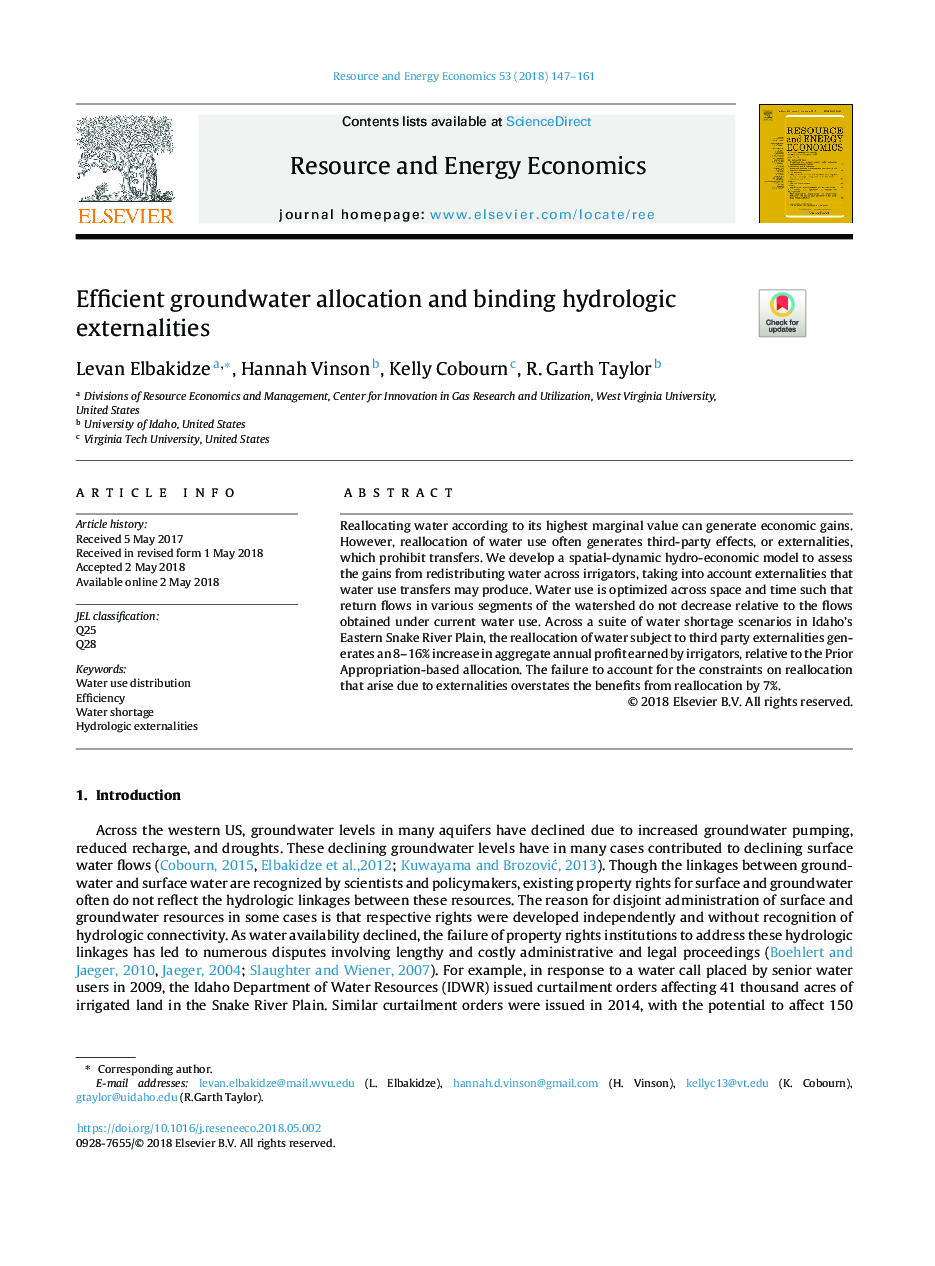| Article ID | Journal | Published Year | Pages | File Type |
|---|---|---|---|---|
| 7387428 | Resource and Energy Economics | 2018 | 15 Pages |
Abstract
Reallocating water according to its highest marginal value can generate economic gains. However, reallocation of water use often generates third-party effects, or externalities, which prohibit transfers. We develop a spatial-dynamic hydro-economic model to assess the gains from redistributing water across irrigators, taking into account externalities that water use transfers may produce. Water use is optimized across space and time such that return flows in various segments of the watershed do not decrease relative to the flows obtained under current water use. Across a suite of water shortage scenarios in Idaho's Eastern Snake River Plain, the reallocation of water subject to third party externalities generates an 8-16% increase in aggregate annual profit earned by irrigators, relative to the Prior Appropriation-based allocation. The failure to account for the constraints on reallocation that arise due to externalities overstates the benefits from reallocation by 7%.
Keywords
Related Topics
Physical Sciences and Engineering
Energy
Energy (General)
Authors
Levan Elbakidze, Hannah Vinson, Kelly Cobourn, R.Garth Taylor,
